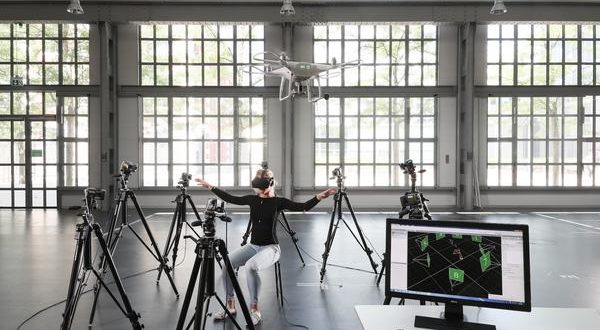Ever donned a pair of VR goggles and flown your drone from a true birds-eye perspective? Researchers at École polytechnique fédérale de Lausanne (EPFL) are taking that immersive feeling to the next level, designing a system that can control a drone with precision by registering the torso movements of the pilot.
Better yet, EPFL’s research shows that using just your torso to pilot a drone is more immersive and more effective than when using the well-established joystick.
The premise of the study was that flying using our fingers and thumbs behind the controls isn’t the most intuitive option.
Instead, scientists from EPFL wanted to see if using the human body as a means of control was possible. So they set up a system and a virtual reality platform to determine which movements are most intuitive and natural.
“Our aim was to design a control method which would be easy to learn and therefore require less mental focus from the users so that they can focus on more important issues, like search and rescue,” says lead author Jenifer Miehlbradt of EPFL’s Translational Neuroengineering Laboratory led by Bertarelli Foundation Chair Silvestro Micera.
“Using your torso really gives you the feeling that you are actually flying. Joysticks, on the other hand, are of simple design but mastering their use to precisely control distant objects can be challenging.”
EPFL scientists have found 4 markers on the torso that can be used as control points, the movement of which was found to accurately pilot flight simulators and real drones through a circuit of obstacles effectively.
The team then compared their form of torso control to joystick control with 39 individuals. The results showed that their form of torso drone control actually outperformed standard joystick control in terms of precision and reliability – with very little training time.
“Data analysis allowed us to develop a very simple and intuitive approach which could also be used with other populations, machines, and operations,” says Micera, also at the Scuola Superiore Sant’Anna in Italy in Biomedical Engineering. “The approach significantly improves the teleoperation of robots with non-human mechanical attributes.”
Read more: Drone Immersion Flies Beyond FPV Goggles With FlyJacket
So What’s Next?
The results of the work so far suggest that we could be one step closer to a more immersive and effective way to control our drones. Eventually, this could leave our head, limbs, hands-free to focus on other tasks.
The EPFL team says that the next steps are to turn the torso piloting tech into a wearable. A prototype has already been made. And it doesn’t need to work alongside external motion detectors:
Malek Murison is a freelance writer and editor with a passion for tech trends and innovation. He handles product reviews, major releases and keeps an eye on the enthusiast market for DroneLife.
Email Malek
Twitter:@malekmurison
 Unmanned Aerial Vehicle The latest drone news
Unmanned Aerial Vehicle The latest drone news



